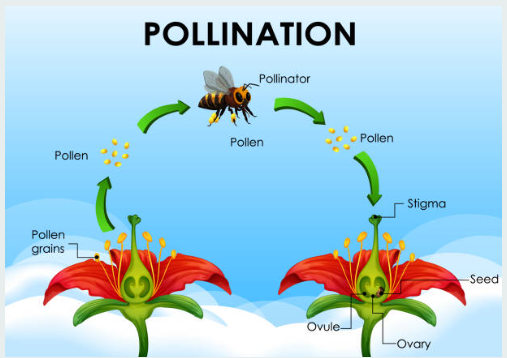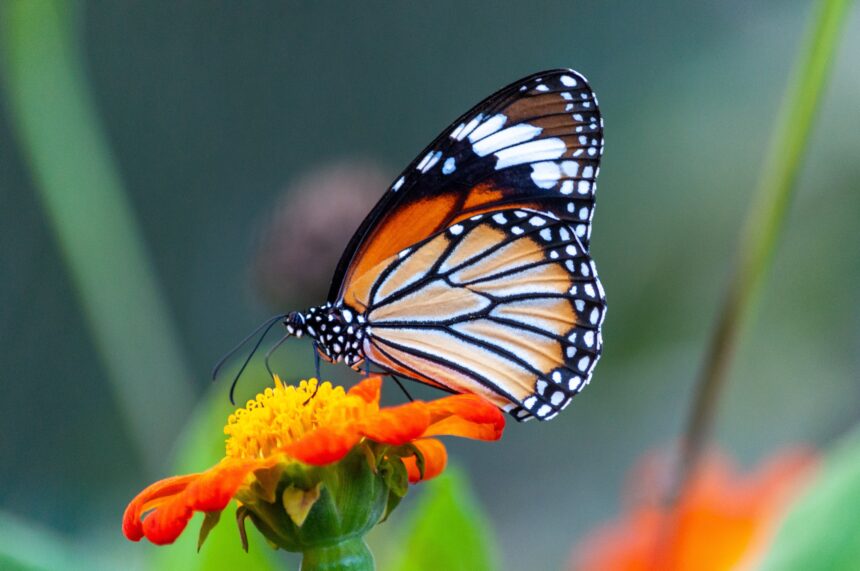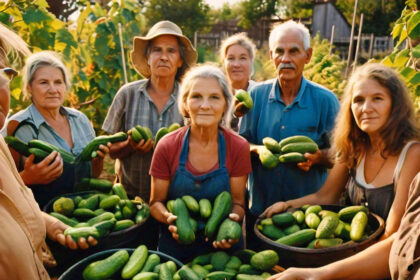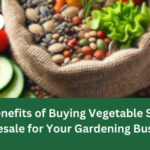Pollination is key to plant reproduction and crucial for our food supply. But how much do you know about this vital process? Let’s explore the world of seed pollination and learn how it creates new life.
Importance of Pollination
Pollination is necessary for a healthy ecosystem and food production. It’s vital for our food supply. One in three bites of food we eat comes from pollinators. They help grow fruits, vegetables, nuts, and other crops we love.
Ecosystem and Food Production
Bees, butterflies, and hummingbirds move pollen between flowers. This helps plants make seeds and fruit. Without them, we’d have fewer foods to eat. They also help wild plants grow, which feed other animals.
Diversity of Foods Relying on Pollination
About three-fourths of the world’s flowers and 35% of our food crops need pollinators to reproduce. In the U.S., over 3,500 types of native bees boost crop yields. Animal pollinators like bees and butterflies make sure we have a wide variety of foods.
Pollinators are very important to us. They keep our ecosystems balanced and our food supply plentiful. We must protect and support them for a healthy planet and our well-being.
Understanding Seed Pollination

Seed pollination requires moving pollen from a flower’s male part to a female part. This crucial process helps in making seeds and fruits. It happens through self-pollination and cross-pollination.
Self-pollination means pollen from a flower goes to its own stigma. This is common in plants with male and female parts close together. These plants can make seeds and fruits on their own, without help from others.
But, cross-pollination moves pollen from one flower to another. This is done by wind or animals like bees and butterflies. Cross-pollinated plants need these helpers to spread pollen. This helps make seeds and fruits better.
For pollination to work, pollen must be alive and reach the stigma. Things like temperature and humidity affect how well pollen moves. Good conditions help pollen get to the stigma and fertilize it.
Knowing how pollination works is key for healthy ecosystems and food diversity. We need to understand pollinators and what affects pollination. This helps us protect our environment.
Timing of Pollination
Pollination is key to making seeds and fruits. Plants bloom at specific times to match their pollinators. This timing helps plants reproduce and grow well.
Seasonal Variations
In spring, early bloomers feed pollinators waking up from sleep. Summer is when most plants bloom and pollinators are busiest. Late bloomers in fall give pollinators food before winter.
Even in cold months, some bees stay active in dead plants. They keep helping with pollination.
Things like temperature, humidity, and wind affect pollen and pollinators. For example, pollination timing changes with seasonal changes and environmental factors. This impacts the plant flowering cycle.
Some plants start flowering as early as week 11 or 12. They peak in weeks 13 or 14 and end between weeks 15 to 19. Bee visits to these plants change over time, with the most in the early bloom.
Having many plant species around can also change bee visits. Pollinators like variety in food sources. Knowing how seasonal variations and environmental factors affect pollination timing and plant flowering helps keep ecosystems healthy and food production up.
Pollinator Habitats
Pollinators like bees, butterflies, and hummingbirds are key to our ecosystems and food. But, their homes are facing threats from human actions like building and farming. We need to know what they need to survive.
These creatures need different places to live and find food. Bees might nest in leaves or mud, while butterflies rely on certain plants. They also need many flowers that give them food all season.
But, their homes are breaking into smaller pieces. This happens with cities growing, changing land use, and farming. Keeping their habitats together is vital for their survival and our food and nature.
- Plant many native, flowering plants that bloom at different times to feed pollinators all year.
- Don’t use harmful chemicals like pesticides that can hurt pollinators.
- Make sure they have places to nest, like bare ground or dead wood.
- Keep their homes connected with green spaces and paths for them to move easily.
By saving and fixing pollinator homes, we help these important creatures. This way, they can keep helping our ecosystems and food production. We can make a world where pollinators do well and keep giving us their important services.
Pollination Seeds
After pollination, the flower gets fertilized. This means the pollen joins with the ovule to make a seed. Inside this seed, an embryo and endosperm start to grow. This takes about 40-60 days, making the seed ready to spread out.
Wind, water, or animals can then carry these seeds to new places. This helps the plant grow in new areas and keeps its genes diverse.
Creating seeds is key for plants to survive and spread. Seed dispersal is crucial for this, letting plants move to new spots and adapt to different places.
Heirloom seeds, over 50 years old, can make plants just like the original. This makes them great for saving seeds. But, modern hybrid seeds might not produce the same kind of seeds, often being sterile and different from the parent plant.
To keep plants from mixing their pollen, keep them at least 100 yards apart. For saving seeds, grow three plants of the same type together to stop cross-pollination. Using blossom bags can also help keep the pollen in.
For pollinating fruits and veggies, like squashes and cucumbers, use a clean paintbrush. Growing a test plant from saved seeds can show if cross-pollination happened. The plant’s look will tell you if it’s pure or mixed.
Pollination, fertilization, and seed making are vital for plants to live and spread. By knowing this process, gardeners and farmers can improve their seed production. This helps plants grow and stay diverse.
Types of Pollinators
Many different creatures help pollinate plants. Bees and beetles are key players. They have special ways of helping plants reproduce.
Bees, Beetles, Butterflies, and More
Bees are some of the busiest pollinators. They fly from flower to flower collecting nectar and pollen. This helps them feed their young and keep flying.
Beetles, though not as flashy, also help pollinate plants. They move through flowers and accidentally spread pollen.
Butterflies have long proboscises that let them drink nectar from flowers. Flies are also important. They visit flowers that smell bad or look like meat, helping pollinate different plants.
Hummingbirds have long bills and tongues that let them reach deep into flowers. They are key pollinators for many plants. Even the wind helps pollinate some plants by carrying pollen in the air.
From bees to butterflies, each pollinator is vital. They keep ecosystems healthy and full of life.
Supporting Pollinators
Pollinators like bees and butterflies are in trouble due to lost habitats, pesticides, and diseases. But, you can help by making your area friendly for them. Start by planting native plants that do well in your area.
It’s also key to cut down on pesticides and herbicides. These can hurt pollinators and mess up the ecosystem. By reaching out to your local extension office, you can find out which plants and methods help pollinators in your region.
The U.S. government has made protecting honey bees and other pollinators a top goal. They have a plan to fix pollinator habitats, lessen harmful pesticide use, and support farming that’s good for the planet.
Seed mixes made for pollinators are great for helping pollinator habitats. They have many wildflowers and plants that give nectar and pollen all season. For these mixes, you should plant 20 to 40 seeds per square foot, depending on how big your area is.
Small actions can also help a lot. You can make a bee lawn, start a butterfly garden, or plant trees and shrubs that pollinators like. Doing these things helps keep our pollinators healthy and our ecosystem balanced.
Conclusion
Seed pollination is key to the life and survival of many plants. Pollinators like bees, butterflies, and hummingbirds help by moving pollen. This keeps ecosystems healthy and helps grow the food we eat.
Over 80% of the world’s flowers need a pollinator to make seeds. In the US, more than 150 crops rely on pollination, including fruits and grains. Pollinators bring us one out of every three bites of food by helping over 180,000 plant species.
Protecting pollinators is crucial for our food and environment. Bees, beetles, butterflies, and hummingbirds are vital for plant reproduction. By supporting their habitats, we help our environment and food supply for the future.





